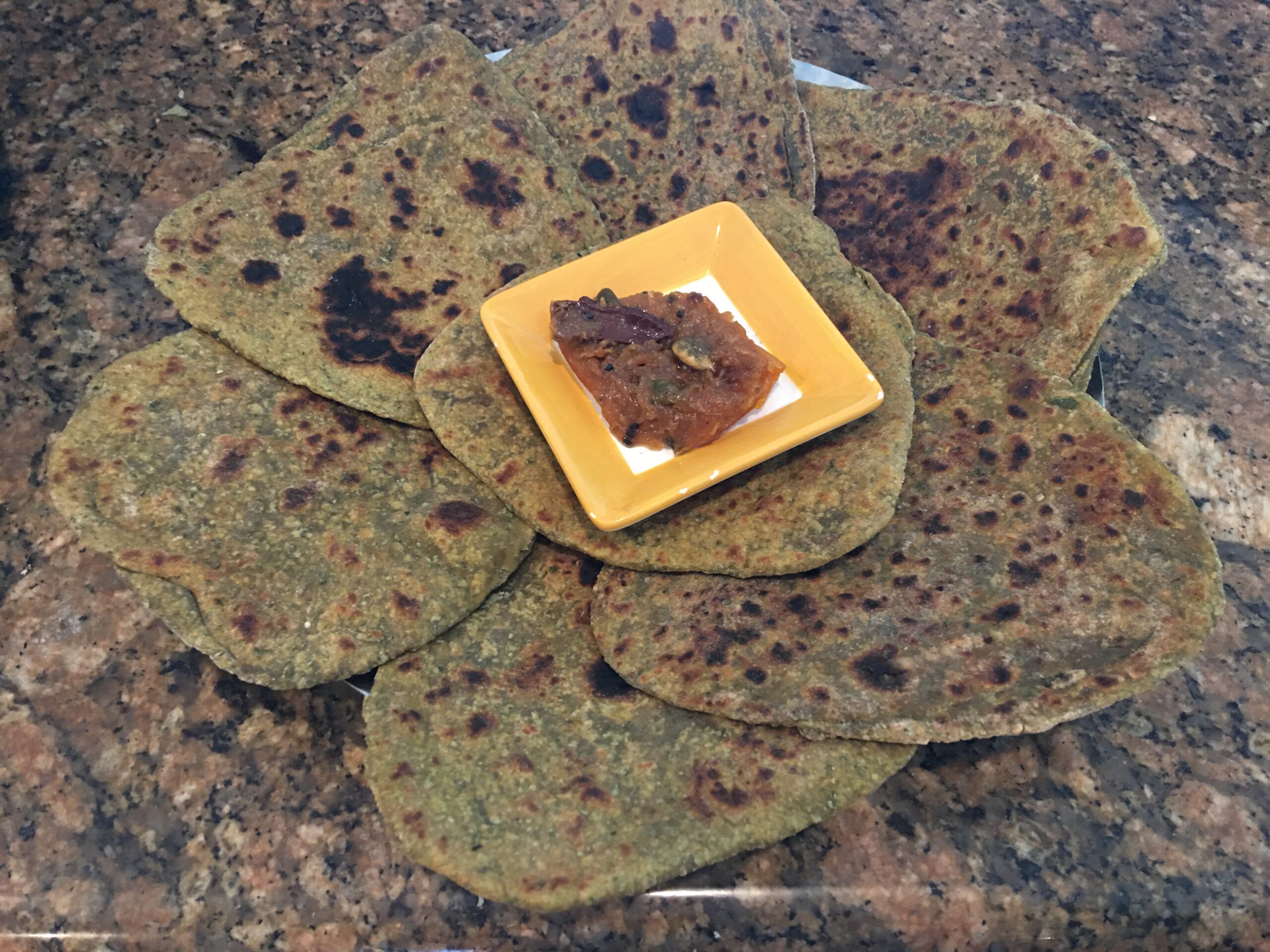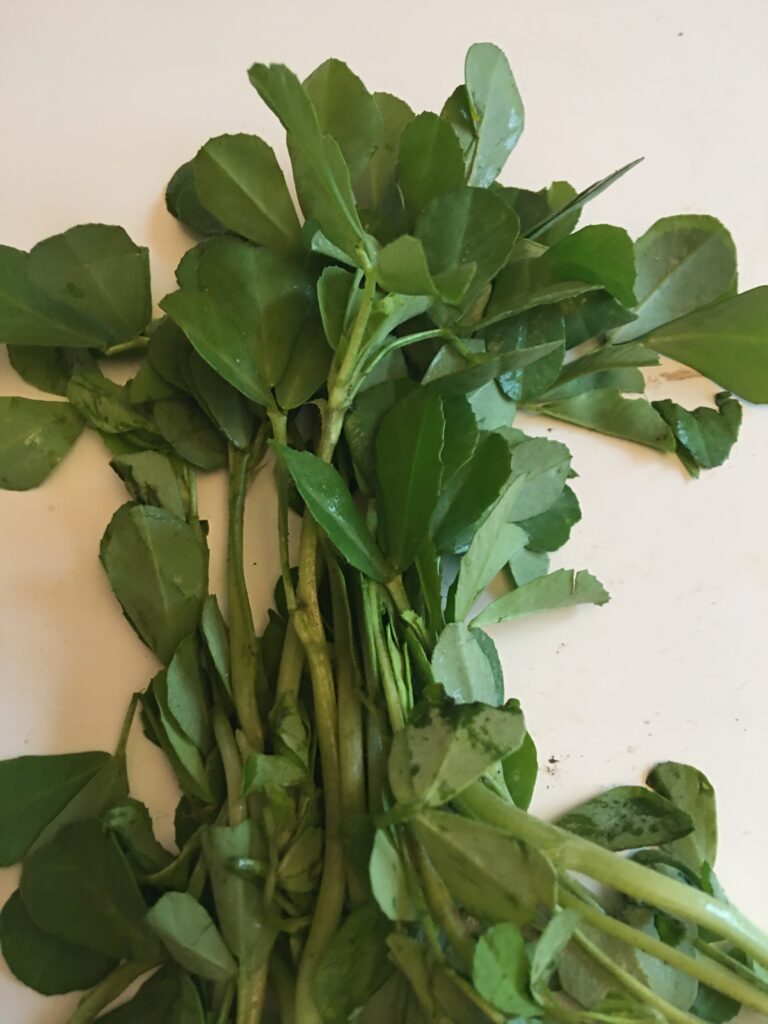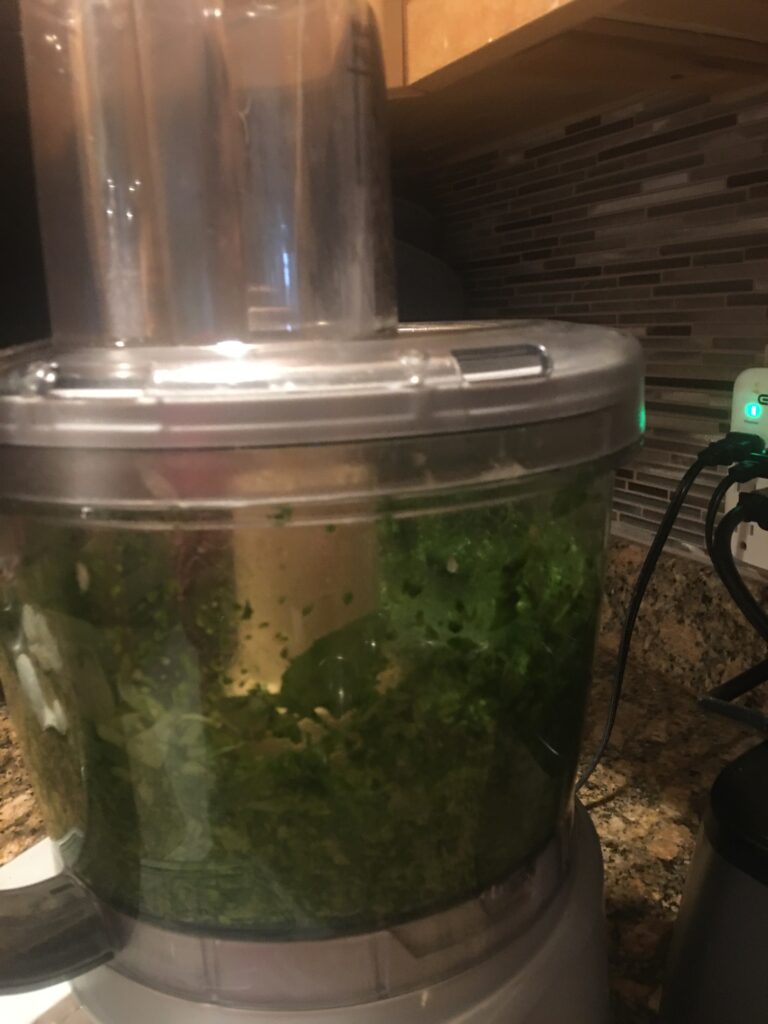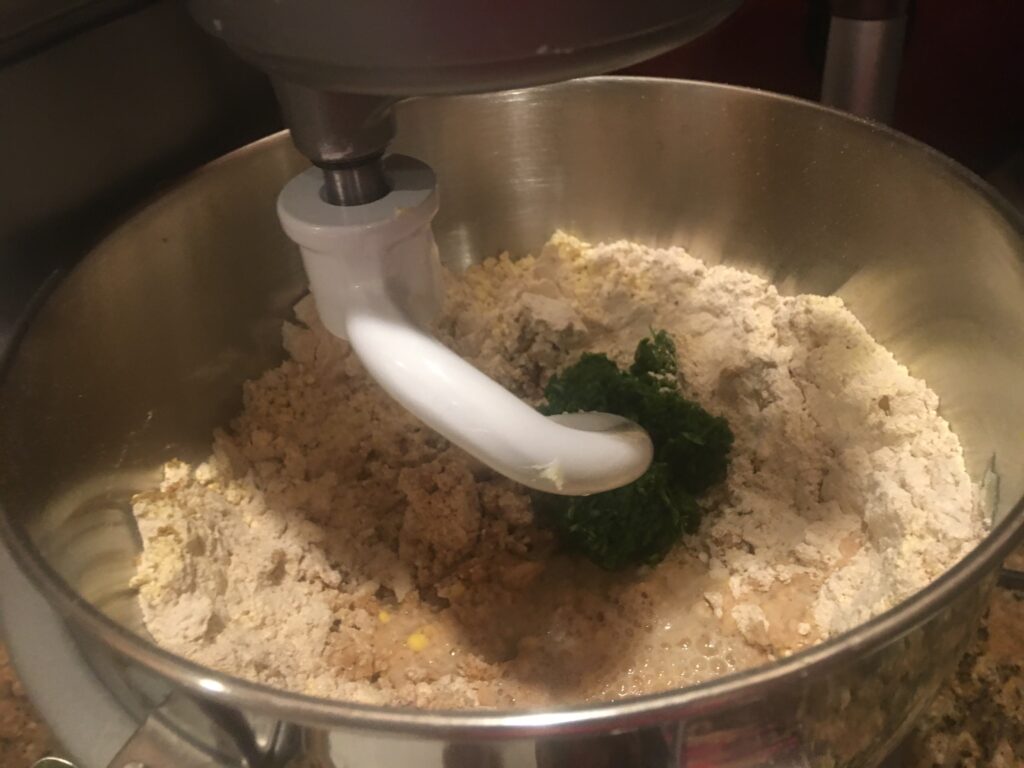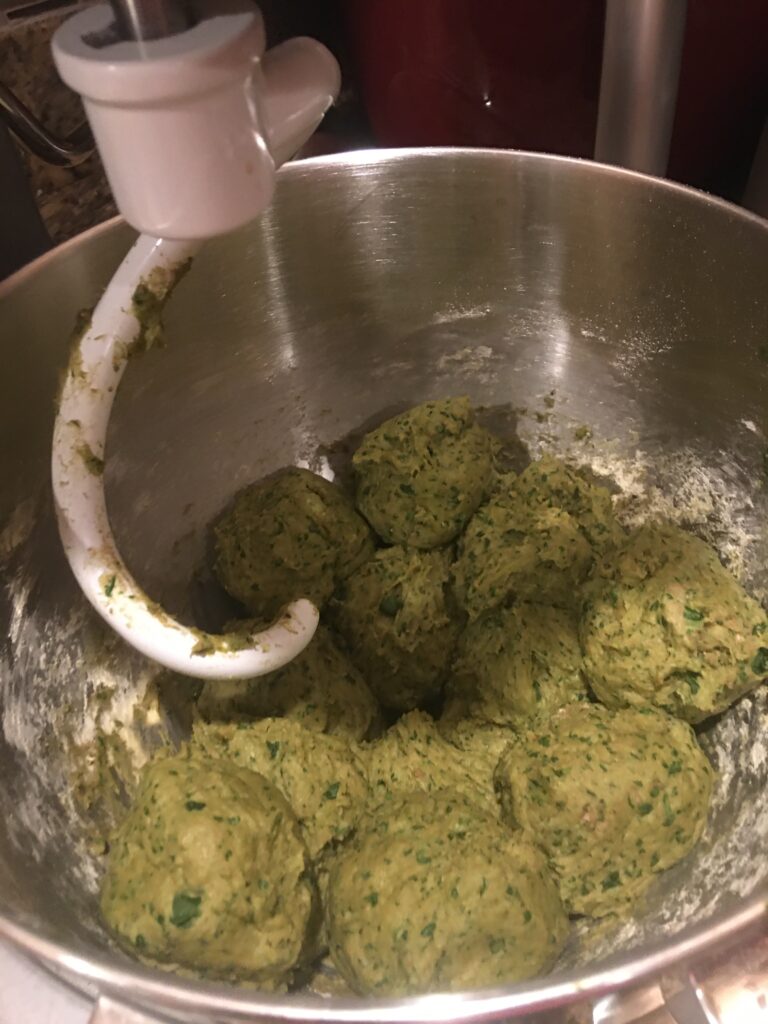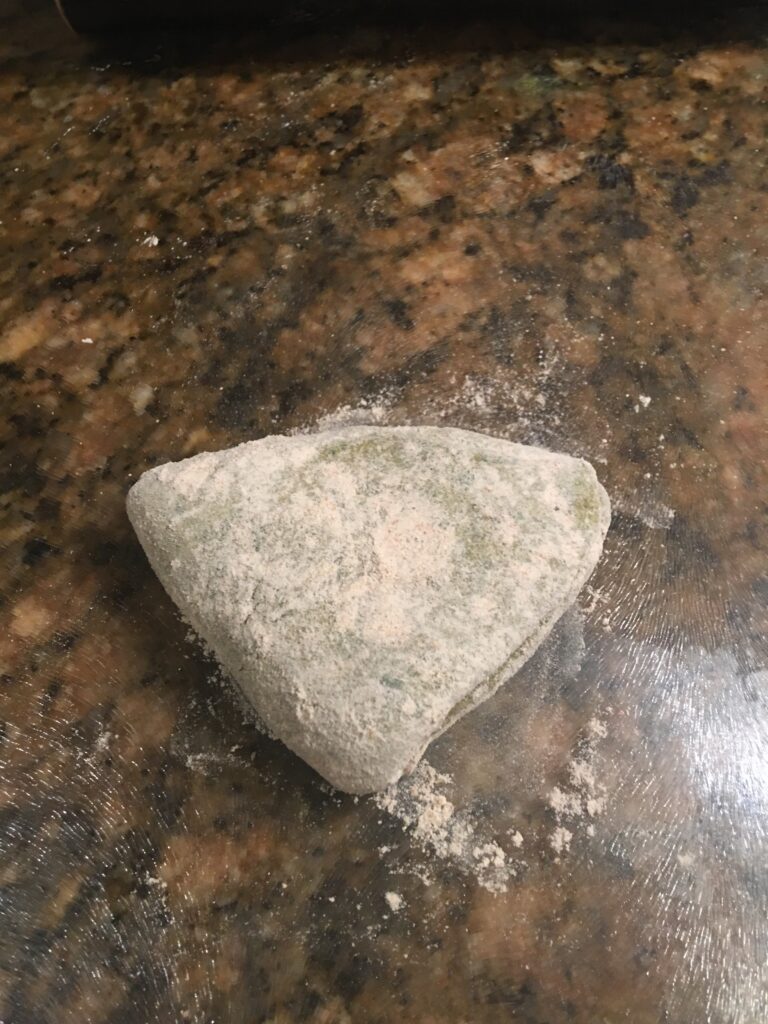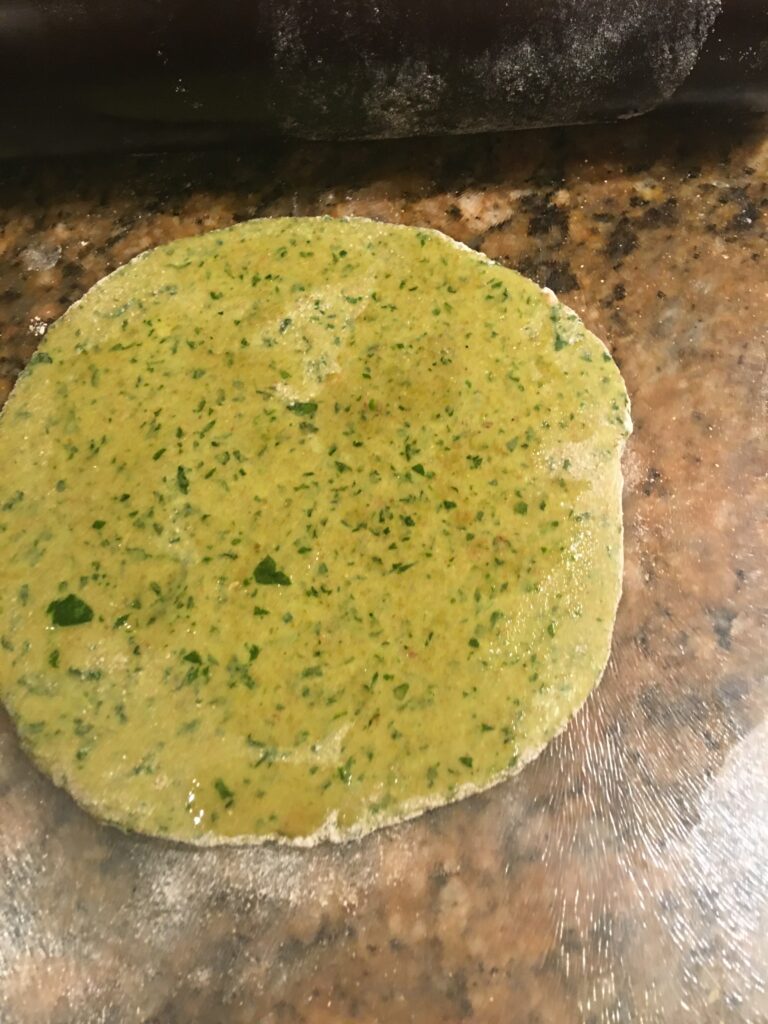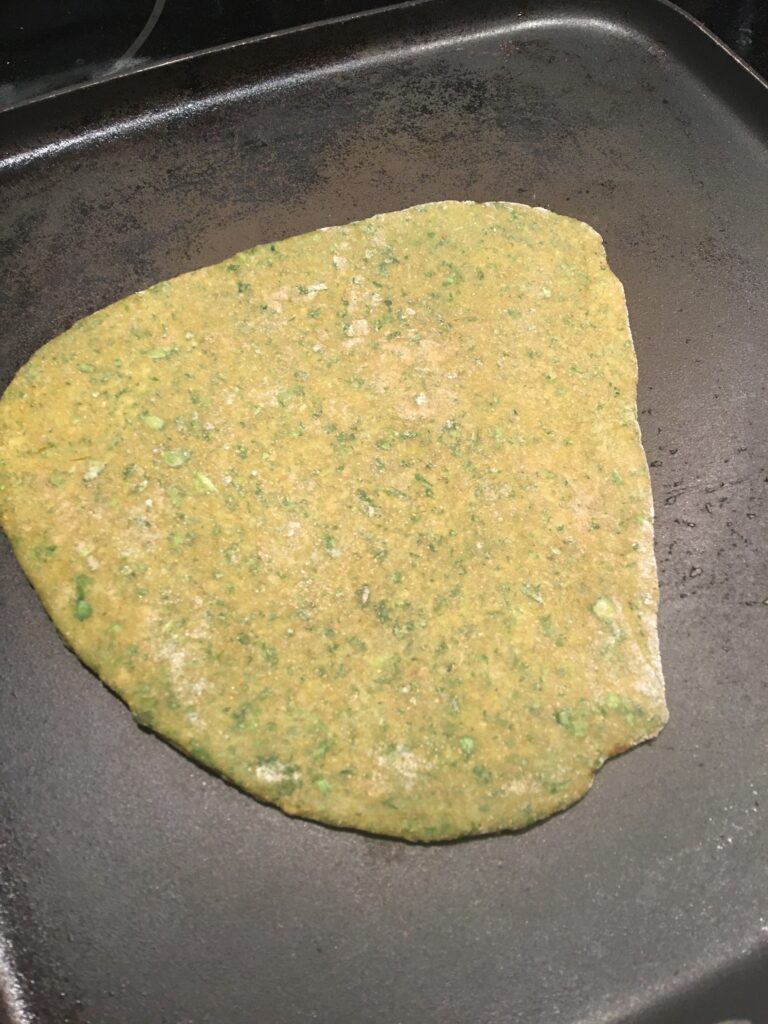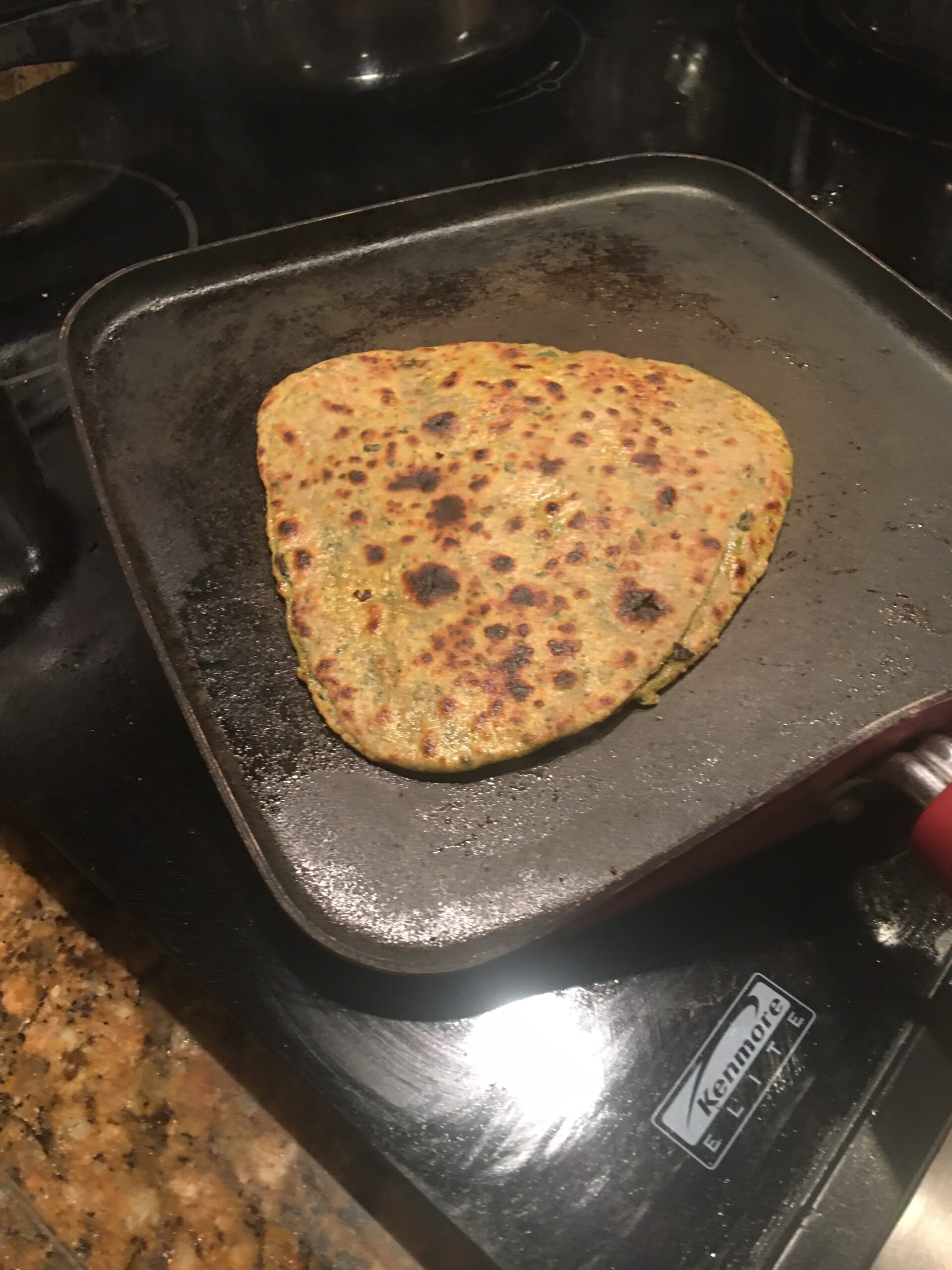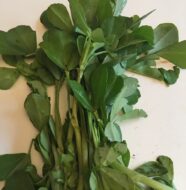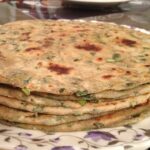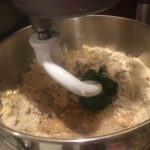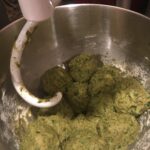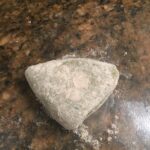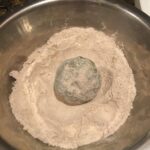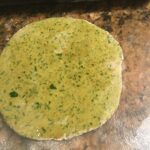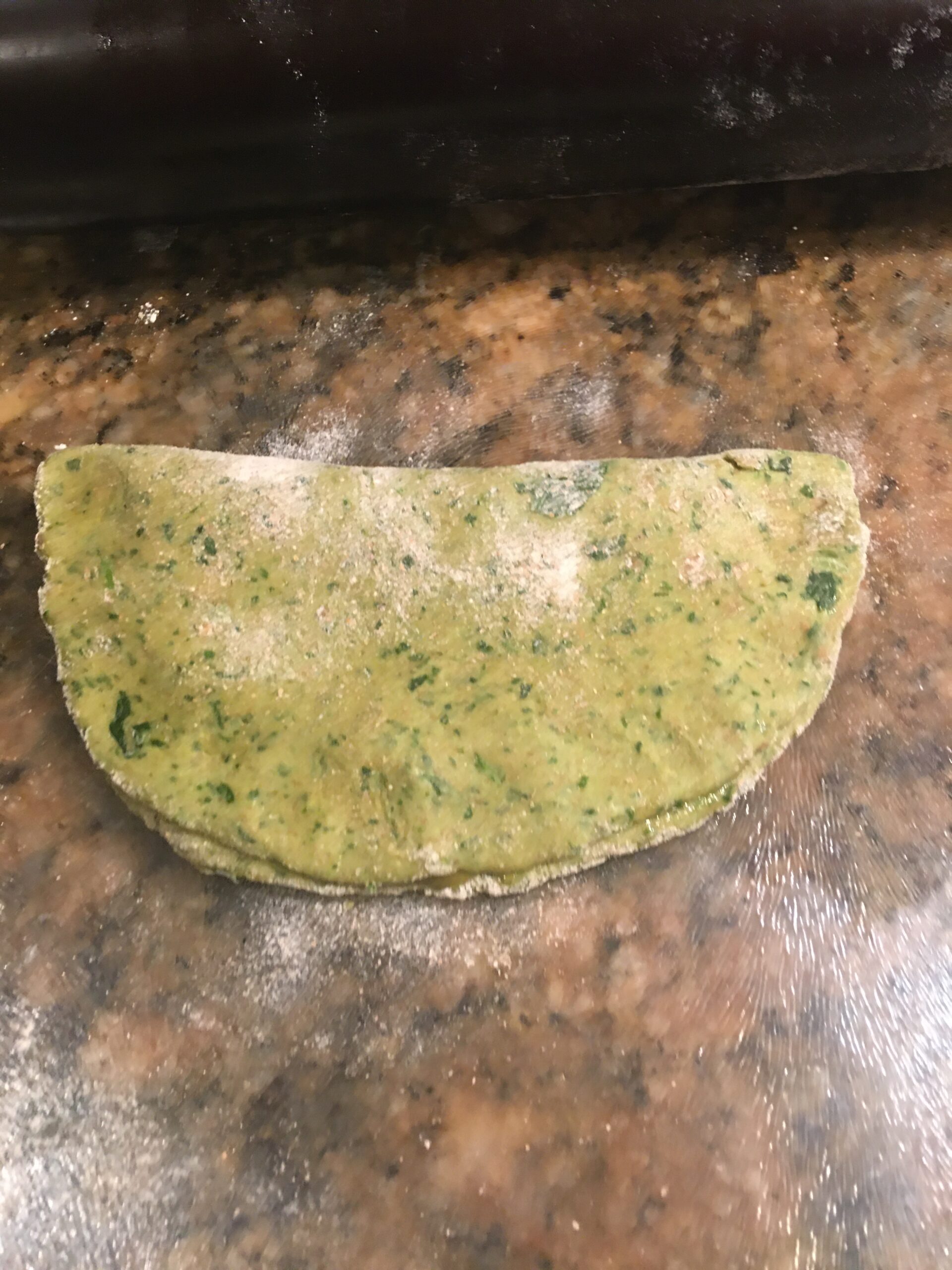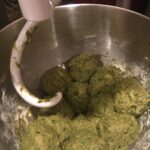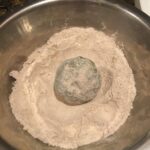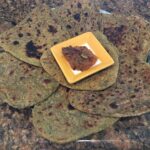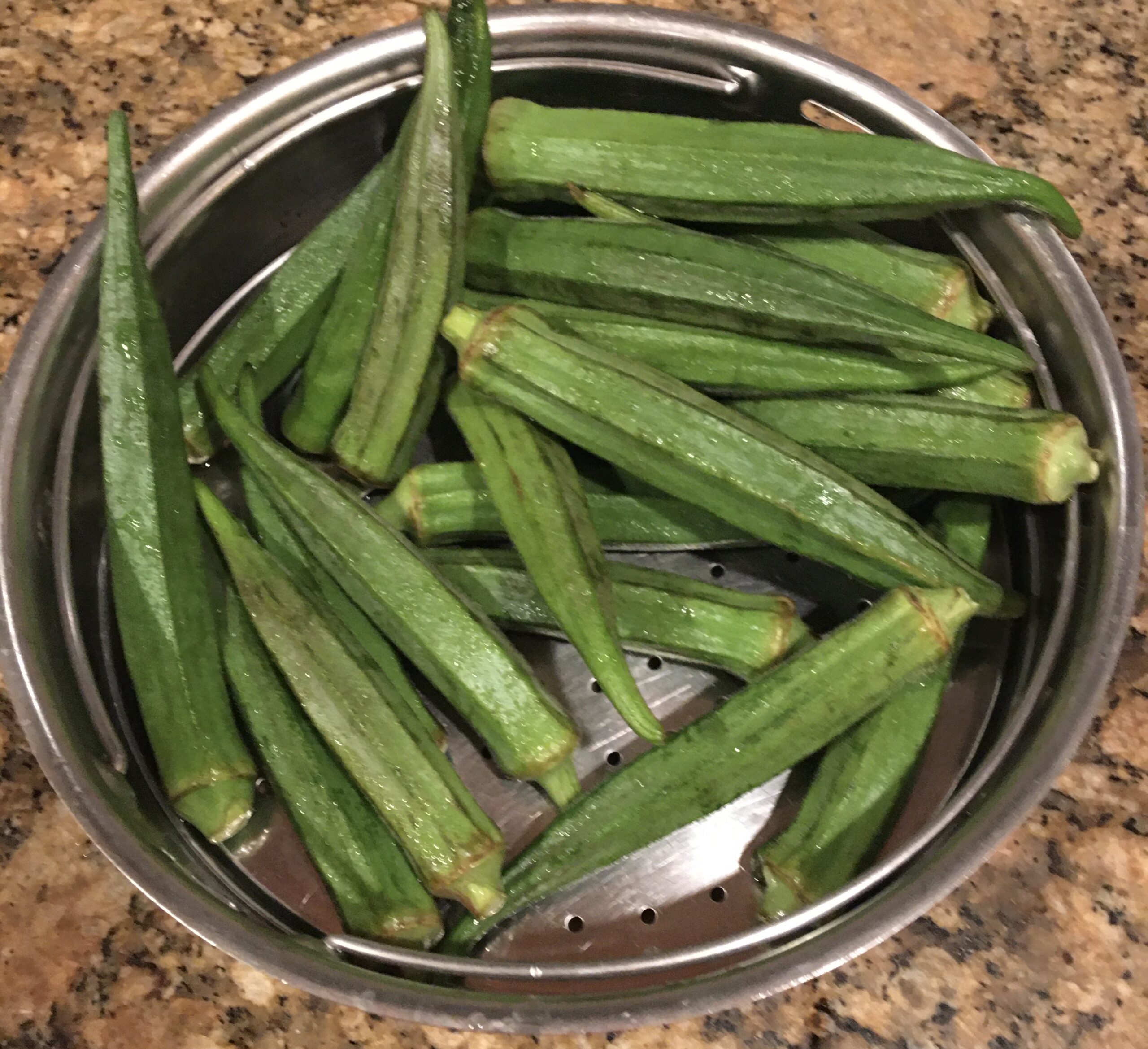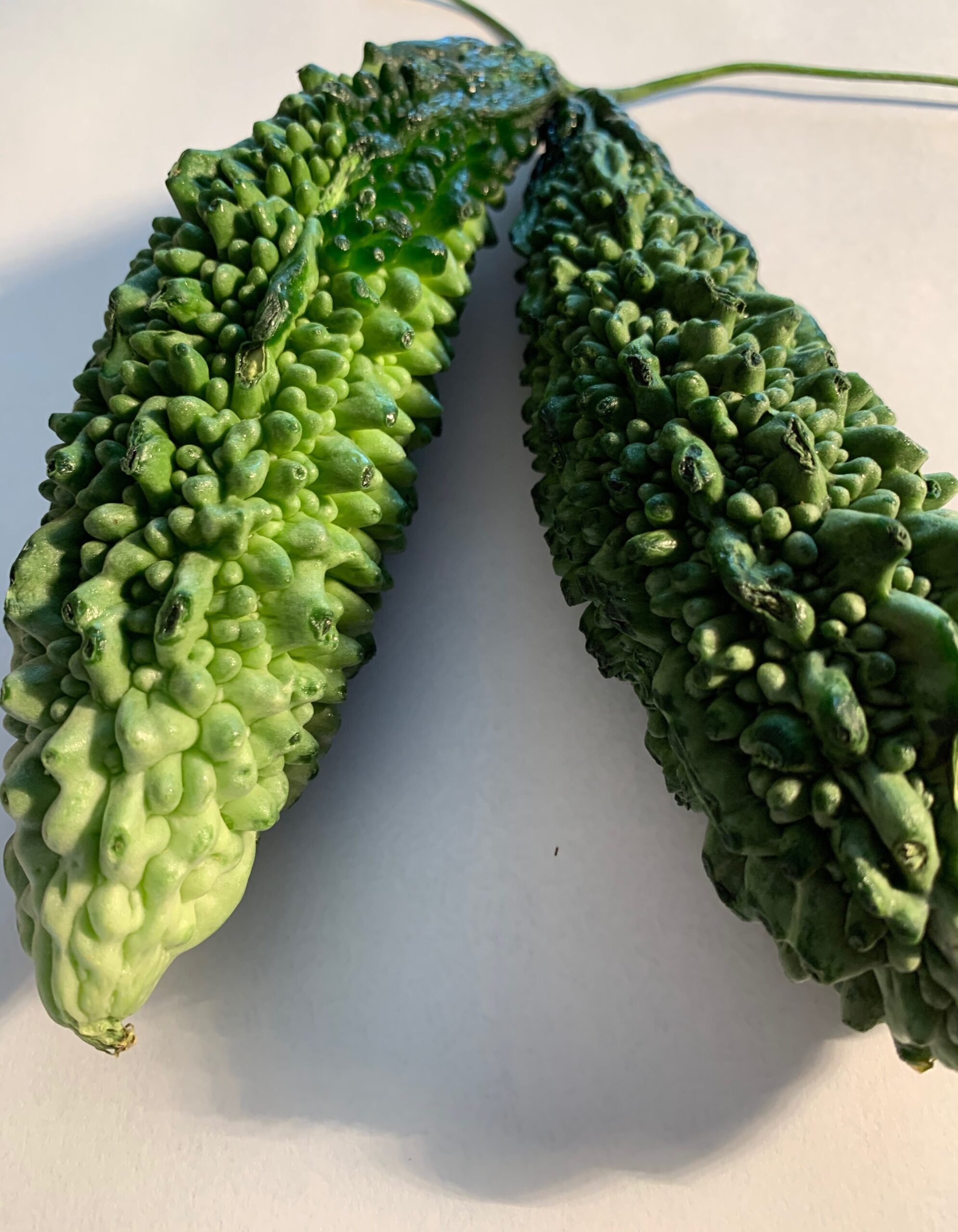Including fenugreek in your diet on a regular basis will keep away diabetes, cancer, and cardiovascular diseases. In this recipe, minced fenugreek leaves are combined with chickpea flour and whole wheat flour along with spices and made into a dough. The dough is allowed to rest a few minutes and rolled into circles/triangles and cooked on a skillet. It is eaten for breakfast, lunch, or dinner with yogurt. The dough can also be deep-fried to make Methi Pooris.
Story : Stuffed Parathas with yogurt are a breakfast staple in Punjab among the farmers families and at the Makindu Sikh temple (Nairobi) for travelers passing by, since it keeps them full through out the day. The stuffing varies from cauliflower, carrots, potatoes, peas, radish, to spinach, or fenugreek leaves; though potato or cauliflower stuffings are most popular.
Health Benefits of Fenugreek
- Fenugreek for diabetes: contains Galactomannan, a natural fiber that is able to slow down the rate at which sugar is absorbed in the bloodstream.
- Fenugreek has the amino acid (4-hydroxyl isoleucine) which induces the production of insulin (15 – 20 g fenugreek recommended for daily blood sugar control).
- Fenugreek also helps reduce LDL cholesterol levels to prevent heart attacks and strokes.
Spice health Powers
- Red chili powder boosts immunity with its bright color which indicates high vitamin A or Beta carotene content vital in keeping a healthy respiratory, digestive, and urinary tract. It is also known as anti-infection vitamin serving as the first line of defense against infections.
- Pomegranate seeds protect the body from free radicals and act as a blood thinner. They prevent blood from forming internal clots in the heart or arteries and coagulating.
- Carom Seeds aid digestion. They improve the digestive efficiency of the gut by stimulating the release of gastric juices. They are also known to eliminate constipation which prevents bloating and cramping besides preventing the risk of gastric ulcer.
Method to cook Methi Parathas
- Make a dough with wheat flour, salt, and water. Keep aside for (10 min)
- Pluck leaves from the stems of fenugreek rinse and chop finely (if using fresh ones). OR Thaw two pellets of frozen fenugreek leaves. ( 10 min.)
- Add salt and spices; mix well to make the stuffing. (4 min)
To roll and make Methi Parathas
- Knead the dough well and divide into 8 balls.
- Roll out each ball in 4″ circles using a rolling pin. (2 min)
- Spread 2 tbsp. of the stuffing on top leaving 1″ from the edge.
- Use a brush to paint the edges with water. (2 min)
- Place a second paratha on top and seal the edges. Roll lightly on top.
- Fill stuffing in half the parathas, cover and seal edges. (6 min).
- Shallow fry each stuffed paratha on a skillet using 1 tsp. ghee or butter.
- Take care to flip them over, until they turn golden on both sides. (8 min).
Serve Fenugreek leaves (Methi) Parathas with Yogurt, Sour cream, Marmalade or Honey.
TIPS
Save time: Use frozen fenugreek leaves to save on cutting time. defrost, drain excess water in a colander and dry with a paper towel; mix with salt & spices prior to using
Storage: the paratha dough gets softer with a longer proving time & can be refrigerated for one week.
Problem Solving: If the dough gets too loose for rolling
mix in some dry wheat flour to get the right consistency

